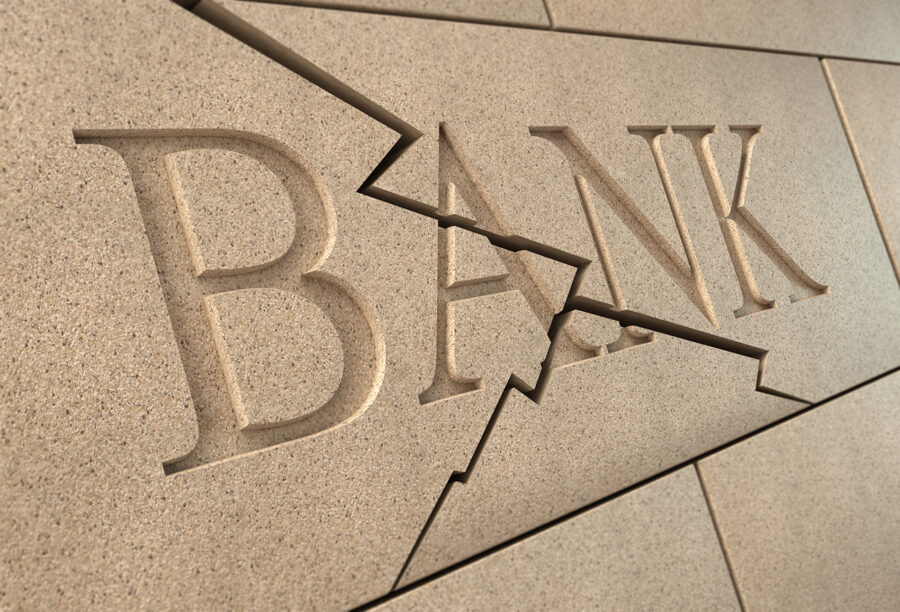Predictions of dire days ahead for the U.S. economy in the wake of the failure in March of Silicon Valley Bank (SVB) are overstated, Wharton experts said at a LinkedIn Live event titled “Understanding the Banking Crisis” on March 30, organized by Wharton Executive Education and co-hosted by the Wharton Initiative on Financial Policy and Regulation (WIFPR). (Watch a video of the complete presentation above.)
Outside a few pockets, credit risk — or the likelihood of debt defaults — has held up relatively well, according to Wharton finance professor and senior vice dean of research, centers, and academic initiatives Joao F. Gomes. “There is not a sense that credit spreads have widened significantly; there is not a lot of nervousness even in the high-yield sectors,” he said.
Commercial Real Estate Hit Hard
The commercial real estate industry is especially hard hit by the SVB collapse and the shock waves it has sent across small and midsized regional banks, noted Wharton professor of real estate and finance Susan M. Wachter. “Regional banks are slowing lending and deal flows are on hold,” she said, pointing out that regional banks make up 70% of overall bank lending to the real estate sector. The office space sector is already facing pressure to transform itself with rising vacancies caused by remote work in the COVID aftermath. Rising interest rates have put downward pressure on prices and accentuated that need, she added.
But Wachter expected that crisis to be contained within the commercial real estate sector, barring unforeseen shocks in the future. The housing sector has had its own slowdown with the interest rate increases hurting the ability of households to refinance their mortgages and qualify for home purchase loans, although that is changing with lower rates, she said. Gomes agreed with Wachter and said he did not expect a replay of the 2008 housing crisis. “There is plenty of vulnerability — housing prices are down, and mortgage rates are high,” but the crisis “will be contained” within commercial real estate and not spill over to the housing sector, he added.
All Eyes on Interest Rates
Much of the outlook depends, of course, on the Federal Reserve’s future monetary policy moves. “Overall, provided the Fed does not surprise us with further interest rate hikes, we will be relatively fine,” Gomes said. “How quickly interest rates come down over the next six months or a year plays into that. I think the Fed would tolerate a recession to fight inflation, but I don’t think they will tolerate financial chaos or financial instability. They will be much more cautious about interest rate hikes — maybe another 25 basis points, but I don’t think they will go beyond that.”
While the Fed has increased interest rates nine times by a total of 475 basis points, it has fallen short in ensuring that banks are verifying appropriate risk management in light of the Fed’s change in monetary policy, said Peter Conti-Brown, Wharton professor of financial regulation, and legal studies and business ethics. He blamed the Fed for not acting in good time to prevent the crisis that higher interest rates wrought on SVB, eventually leading to a run on the bank and its descent into receivership. Incidentally, the Federal Deposit Insurance Corp. announced last week that it had found a buyer for SVB’s loans and deposits in First Citizens Bank of Raleigh, N.C.
Regulatory Shortcomings
The banking crisis set off by SVB’s failure raises questions on the efficacy of the stress tests that gained prominence after the 2008 financial crisis and the 2010 Dodd Frank Wall Street Reform and Consumer Protection Act, according to Wharton professor of finance and economics Itay Goldstein, who led the panel discussion.
Conti-Brown said the Fed failed to use basic bank supervision to check the deterioration in SVB’s finances. “I fault the Fed for not using the plain vanilla supervisory tools that have been in existence for 50 years or longer to help these banks manage the assets and liabilities sides of their balance sheets,” he noted. In a last-ditch effort to prevent a wider panic, the Fed, FDIC, and Treasury triggered “a systemic risk exception” for SVB (and Signature Bank) to fully protect their depositors a couple of days after the runs on those banks.
“Why do we have a full-blown banking crisis the government has declared 15 years after the 2008 [financial] crisis and 13 years after the passage of Dodd Frank?” Conti-Brown asked. “Is it because we have such a fragile banking system that a single bank could impose that kind of systemic risk on us? Or is it that the financial regulators don’t know how to use the intermediate stress tools that Congress has given them? I’m inclined to go with the latter but open to the former, but neither of these scenarios is good.”



